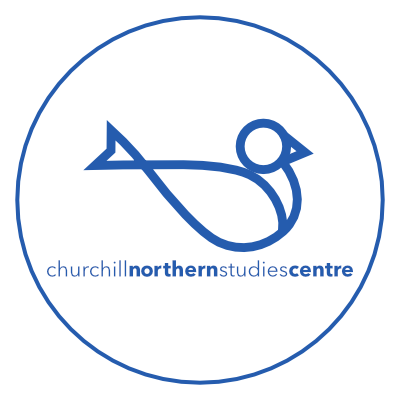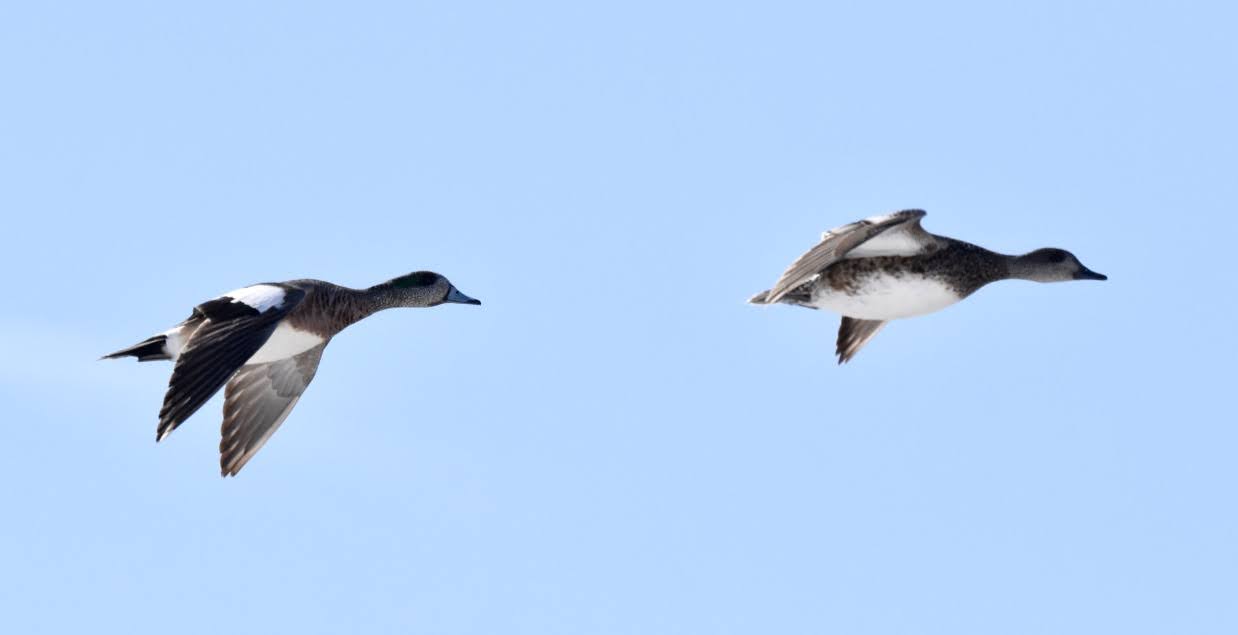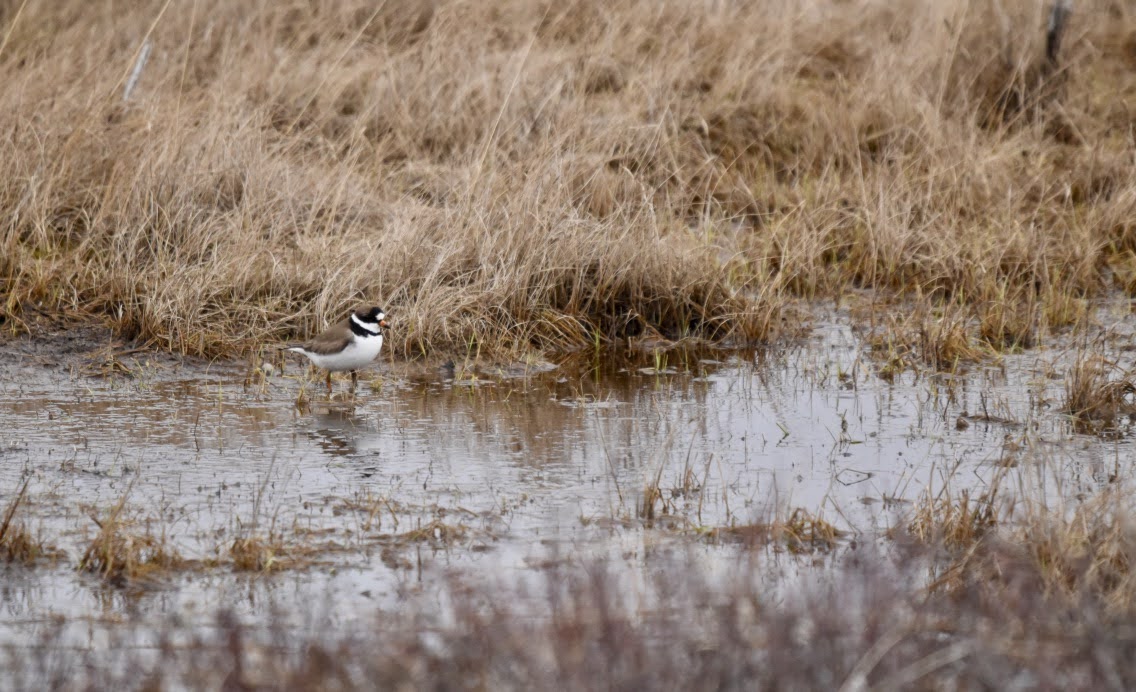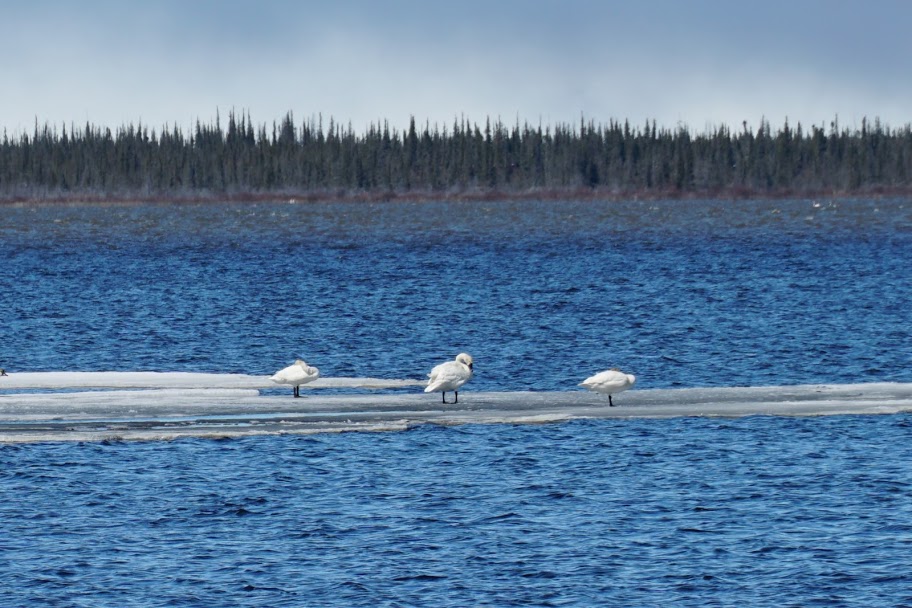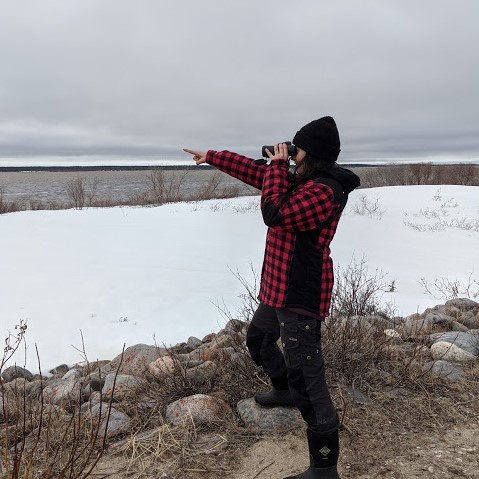By Danielle Chiasson
When I moved to Churchill last year I was excited to walk the subarctic landscape and see plants and animals I had only ever dreamed about. Polar bears, belugas, arctic foxes, caribou! But when I arrived in mid-May, my first thought was “why are there so many darned geese around!?”. I had read about the large diversity of birds that migrate through and breed in Churchill, but I’m not sure I truly understood what that would look like or what that meant. After all, I had never studied birds and could only name a few species that would visit our bird feeders and gardens back home.
For my first couple weeks in Churchill, the only birds I saw were geese and ravens. As the weeks progressed and summer arrived, I definitely noticed different birds in the field. Tundra swans mistaken for bears, arctic terns dive bombing researchers, and flocks of shorebirds along the beaches. But I never put in much effort to seek out more. It wasn’t until this year that I decided I would take advantage of this wonderful bird haven and take up a new hobby: birding.
So here are a few lessons I have learned along the way:
- Get to know the birds in your area. Before heading out on your first birding adventure, do a little bit of research on the kinds of birds you can expect to see. Flip through some bird books and field books and pick some favourites. It helps to look through books that include the species’ range. Are they migrating through your area or will they stay longer to breed and raise young? If you don’t have any books handy, a quick online search will bring up a wealth of knowledge. One of my favourite tools is the Merlin Bird ID app created by the Cornell Lab of Ornithology. The app allows you to choose a region and browse through all the possible birds you may see. The birds are also organized by groups which allows you to get a better sense of the difference between shorebirds, waterfowl, birds of prey, and songbirds. Choose a few favourites from different groups so you don’t feel overwhelmed. Look at photos, read up on their markings and behaviours, maybe even listen to a song or two. There are multiple ways to identify a bird in the wild. I highly recommend starting with waterfowl. They’re easy to spot on the water, usually have colourful and distinct markings, and if you’re quiet enough they won’t fly away or move around too much.
- Pick a birding spot. Now that you’re a little more familiar with the birds you might see, where the heck should you go? You’ll be able to spot birds pretty much anywhere, so I recommend a spot you enjoy. Some nearby ponds, a local hiking trail, a conservation area, and even your backyard are good choices. No matter the spot, your best bet to see active birds is close to their food source. In Churchill, most of the birds that arrive from the south have flown hundreds to thousands of kilometers. They’re most definitely tired and hungry. The first snow-free and ice-free areas are great for spotting new arrivals. There are also some great online resources to help you pick a spot. eBird and iNaturalist are websites where you can find local hotspots where other real-life birders have spotted feathered friends. I’ll include a list of resources at the end of this blog. Goose Creek, the Granary ponds, and around the CNSC are my favourite birding spots in Churchill.
- Pick a birding time. When I was first toying with the idea of birding, I was a little apprehensive because I thought all birders got up at sunrise, and I am NOT a morning person. Although it’s true that some birds are very active first thing in the morning (I’ve got a robin that likes to sit outside my window and sing its heart out at 4:30 in the morning), I have found that evening birding is also quite successful. It’s also worth trying out different times of day and see if you spot different birds. No matter the time of day, making the time to go outside and look for birds is always rewarding. Even if you don’t spot a cool new species, maybe you were able to watch a sunrise or take some much needed time away from your busy day.
- Be patient and enjoy! Once you find a spot you like, get comfortable and stay for a while. If you arrived by car or on foot, you have most likely scared some birds away. But wait a few minutes and you’ll have plenty of birds to check out. Take the time to enjoy your surroundings and notice the habitat in which the birds are found. There’s a lot of land to cover so take the time to look in the trees and bushes, along the edges of ponds, and in the sky. I also highly recommend taking the time to listen to the sounds of nature and the chorus of bird calls. As humans, we’re subject to so much noise pollution. There is something truly healing and wonderful about the sounds and songs of birds. It’s also quite humorous at times. Some birds make wild and silly noises, especially when they’re trying to impress a female.
- Bring some friends and make new ones! I have really enjoyed birding with my friends. Some are amateurs like me, and some are more seasoned birders. Either way, it’s fun to learn from each other and even better when you can successfully identify a new bird. It’s also a great way to improve your communication skills by carefully describing markings and behaviours. Letting your friend know that there is a black and white bird over there by the tree just doesn’t cut it. While one person has their eyes on an interesting bird, the other can flip through their bird book or app to find out what it may be. And if you don’t have either of those resources, make note of the details and look it up when you return home. If you’re still having trouble IDing birds, reach out to some birders online. Join a facebook group or a local birding group. There is always an eager birder online who is willing to help. And who knows, you may make some new friends along the way.
- Find what works best for you. There is no right or wrong way to go birding. Don’t let yourself be intimidated by the birders with fancy binoculars, spotting scopes, and cameras with lenses as long as their arms. If the only pair of binoculars you have are a clunky pair that have been sitting in your grandfather’s garage, try them out! While magnification is really helpful for spotting distant birds and looking at fine detail, you can easily try birding on a budget. Go out with friends or a group and share a pair. You can also find some reasonable binoculars with great magnification for under $100. Backyard birding is also a great option from the comfort of your own home. Put out a feeder and see what birds you can attract. Black oil sunflower seeds are more nutritious, easier for birds to crack open, and can be purchased from your local hardware store. Put out a hummingbird feeder and add some native plants to your garden. There are lots of budget friendly options to attract dozens of bird species to your yard.
The main lesson I have learned over the past couple months is that birding can be whatever you make it. You could be the bird collector, continuously adding to your list of sightings. Or the bird photographer, capturing unique moments and developing a new skill. You could be the bird observer, carefully taking note of all the bird’s behaviours. You can be whatever birder you want. For me, I’m still the amateur birder. But I’m also the journaling birder, the evening birder, the subarctic birder. I’m so happy that I have found a new hobby that I enjoy and can take with me anywhere. And I hope that I can inspire others to go out and connect with nature and all it has to offer.
Tweet tweet.
Here are a few online resources that I use and enjoy. Check them out:
Churchill Area Birds
Cornell Lab or Ornithology – All About Birds
Merlin Bird ID app
eBird
iNaturalist
I Saw a Bird – Churchill facebook group
